The Google Car and Tesla Autopilot have blazed a trail for the future Army. Both robotics technology and Army thinking have come a long way since 2009, when Defense Secretary Bob Gates cancelled the massive Future Combat Systems program. Where FCS tried to invent new technology on a schedule for 19 different manned and unmanned systems, all at once, the Army’s new step-by-step approach builds on private-sector breakthroughs in computing to get an unmanned mini-tank — the Robotic Combat Vehicle — in service by the mid-2020s.
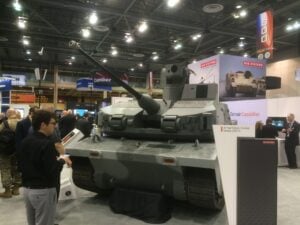
BAE’s Armed Robotic Combat Vehicle (ARCV), originally developed for the Future Combat Systems (FCS) program
Commercial self-driving cars have made sensors both much cheaper and much better than in the days of FCS, for example. Back then, the needed sensors were frankly “cost-prohibitive,” said Kevin Mills, who’s worked at the Tank-Automotive Research, Development and Engineering Center (TARDEC) since 2002
But civilian self-driving cars are still experimental, and they’re only designed to function on a good road with a good wireless connection. The Army’s experimental robot supply trucks — formally, the Autonomous Ground Vehicle/Expedient Leader-Follower program — build on these commercial advances by adding the ability to navigate cross-country, around all sorts of obstacles, without using GPS.
Out of reasonable caution, however, the Army plans to use these robo-trucks in mixed convoys with manned vehicles in the lead, hence “leader-follower.” (In fact, the technology could navigate without a leader, but the Army’s not ready to risk what might happen if something happens the program can’t handle, like an ambush). What’s more, the 60 to 70 prototype trucks being issued to Army units for experiments in 2020 will have only version 1.0 of the software. They won’t be able to pull trailers, for example.
In fact, at first, the robo-trucks won’t even be able to go in reverse. If a tree falls between the manned lead vehicle in a convoy and the unmanned followers, he said, the robots will automatically stop. But then, Mills said, they’ll have to wait for a human operator to drive them around the obstacle, either by remote control or by actually getting in the cab.
But about six months after the soldiers get the 60 prototypes, Mills continued, the Army will issue a software update that should fix all these problems. The trucks will be able to pull trailers, navigate around obstacles, and even back up with computer-guided precision along their own tire tracks. The upgrade might add other features, he added, based on soldier feedback on the initial version.
Just as the Leader-Follower trucks build on commercial self-driving cars by adding off-road capability, Mills said, the Robotic Combat Vehicles will build on the trucks by adding weapons.
At least at first, the RCVs will be remote controlled by a two-soldier team, much like the two operators who fly the Predator drone. The initial software will already be able to follow a manned lead vehicle in a convoy without human control, since it’ll have the same basic software as the Leader-Follower trucks. But the RCV will need a human to remotely drive it into combat: avoiding obstacles, taking cover, and flanking enemies are all complex tasks that require a skilled flesh-and-blood soldier.
The other soldier will control the “mission payload,” everything from pointing sensors as the RCV scouts ahead to aiming and firing weapons.
As technology evolves and soldiers learn to use it, the Army wants to go from two humans remotely operating one robot, to one human controlling one robot, to one human commanding multiple robots. Even then, however, the Department of Defense has a strict policy that humans will always be “in the loop” for the use of lethal force. Whether that restriction is self-defeating, especially against an enemy without our concern for collateral damage, is something the soldiers are going to have to figure out in the experiments.
Last Hurrah Of The M113
The Army is still figuring out what the Robotic Combat Vehicle will look like and how it will fight: That’s what experiments are for. But to start experimenting ASAP, Mills told me, the Army’s modifying the venerable M113. This basic armored box on tracks entered service in Vietnam, served in countless variants throughout the Cold War, and is finally being replaced by a Bradley variant, the Armored Multi-Purpose Vehicle. Yet the aging M113 is arguably a better surrogate for the RCV than more modern war machines.
For one thing, Mills said, “it’s about the size we think an unmanned robotic combat vehicle will be, in the 10 to 20 ton range.” Modern armored vehicles are much larger: In their latest models, the M2 Bradley troop carrier that replaced the M113 weighs about 33 tons, while the M1 Abrams heavy tank weighs nearly 70. But much of that weight is driven by thick armor to protect the human soldiers inside.
The M113, by contrast, is so small and lightly protected that Viet Cong mines could easily kill it half a century ago, and US and Vietnamese soldiers often decided it was safer to ride on top than inside. But if there are no soldiers aboard, only relatively expendable robots, an M113-size vehicle is a great idea: It’s cheaper, lighter, smaller, so it’s easier to deploy, supply, hide and send down narrow alleyways into potential ambushes.
The M113’s an ideal surrogate in other ways, as well. As a tracked vehicle, it has the off-road mobility to keep up with tracked M1s and M2s better than you can in a wheeled 8×8 Stryker, let alone a mere 4×4 like a Humvee, MRAP, or JLTV.
Because it’s basically a big empty box on tracks, the M113 also has plenty of room to add new gear. There’s already a host of variants for almost every mission, from mobile command posts to self-propelled mortars. But if you don’t find what you need already parked somewhere, Mills said, “you can also cut the back off (and) add different payloads.” (Good luck cutting the armor on an Abrams).
For example, of the M113s now being converted to robots, three will carry standard 12.7 millimeter medium machineguns in a simple remote-controlled mount, but one will get a 30 mm light cannon in an unmanned turret. (The US doesn’t have turreted M113s but other countries have made them without trouble). The other major modification is installing a drive-by-wire system — replacing levers, dials, and other manual controls with the same digital technology found in most new cars — to make it easier to plug in a robot brain in place of human crew.
“Those platforms are being refurbished and the drive-by-wire kit is being installed as we speak,” Mills told me this morning. The full robotics kit should be installed by April of next year, when it’ll undergo internal TARDEC testing before being handed over to the independent Army Test & Evaluation Command (ARTEC) for safety certification. After that, they’ll be ready for regular soldiers to use in field exercises.
The four initial vehicles will make up a platoon, allowing the Army to try out group tactics with the robots working alongside two manned Next Generation Combat Vehicle prototypes delivered at the same time in 2019-2020. (The Army’s NGCV modernization team oversees both projects as a single combined human-machine force). In the longer term, however, TARDEC plans to build at least 12, enough for a company.
By when will the Army have a dozen robot mini-tanks to play with? “There’s some future decisions that need to be made to finalize that, but for sure by 2023,” Mills told me. But the way Army leaders are pushing the project, that could be earlier, he said: “It just remains to be seen if that’ll be accelerated or not.”
Israel likely partner for Greece as it looks for integrated air defense systems
A pair of sources told Breaking Defense that Greece is in the fact-finding process of what systems Israeli might be willing to sell, as Athens looks for multi-layered air defense options.












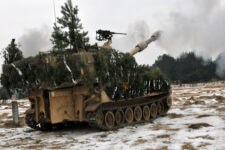



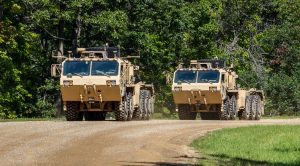
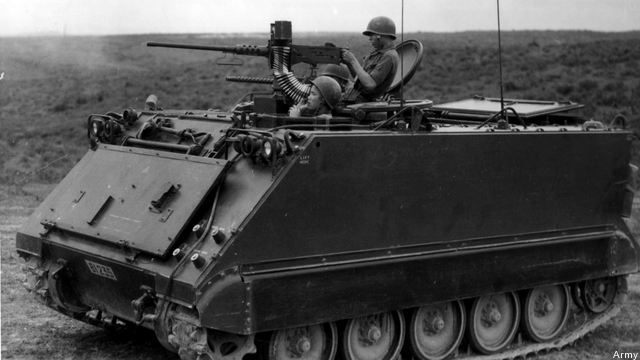
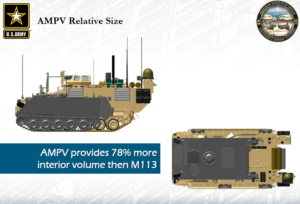
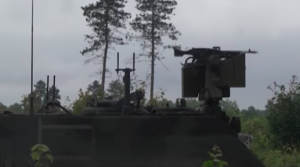

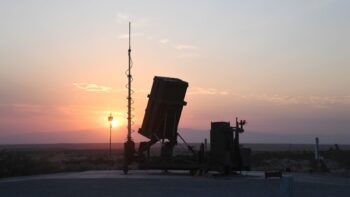


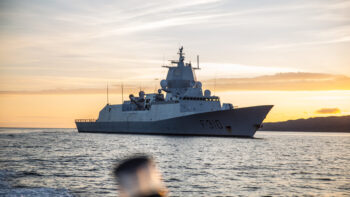
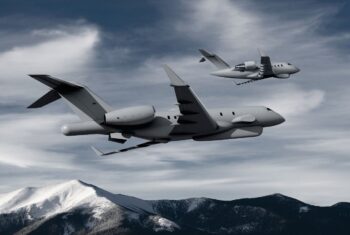
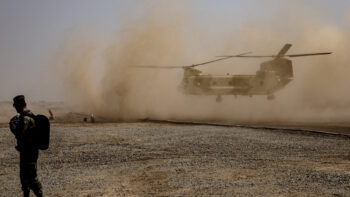
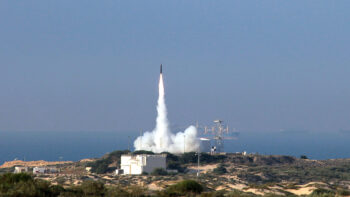
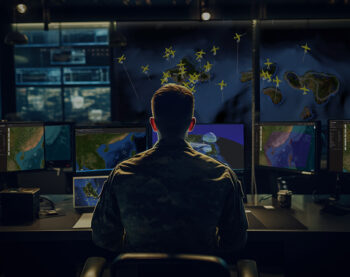
![E-2D_AR_1[1]](https://breakingdefense.com/wp-content/uploads/sites/3/2024/10/E-2D_AR_11-350x233.png)
